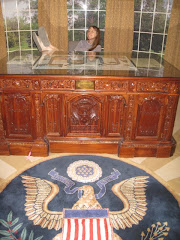I think that it's essential to have a 72 hour kit. So, I have compiled the following helper to get you on your way. These are only my suggestions, based on research I have done as sited.
During an emergency, you may be evacuated and only have minutes to gather what you need. If you have a kit, you're good to go!
1- Water
* one gallon of water per person per day for at least three days, for drinking and sanitation
* Household chlorine bleach and medicine dropper – When diluted nine parts water to one part bleach, bleach can be used as a disinfectant. Or in an emergency, you can use it to treat water by using 16 drops of regular household liquid bleach per gallon of water. Do not use scented, color safe or bleaches with added cleaners.
Additional items you may consider adding:
* Water purifier
* Bandanna / coffee filter to filter out large sediment
* Drink mix to add to purified water to improve taste
2- Food
* At least a three-day supply of non-perishable food
* Can opener for food (if kit contains canned food. Note, 'poptop' cans may pop open in kit!)
* Ways to prepare food such as solar oven, barbecue and charcoal, wood, Sterno, etc.)
* Infant formula
* Pet food and extra water for your pet (where applicable)
* Mess kits, paper cups, plates and plastic utensils, paper towels
* Matches in a waterproof container (matches can be made waterproof by dipping in wax)
3- Clothing / comfort items[1]
* Complete change of clothing including a long sleeved shirt, long pants and sturdy shoes.
* Underwear
* Warm socks
* Rain gear: umbrella, waterproof coat/poncho
* coat, hat, gloves, thermal underwear
* Sunglasses
* Work gloves
* Books, games, puzzles or other activities for children
* Pictures of the family
4- Hygiene / Sanitation
* Dust mask, to help filter contaminated air
* Moist towelettes, garbage bags and plastic ties for personal sanitation
* Household bleach for disinfecting contaminated areas
* Rags to clean with
* Rubber gloves for cleaning
* diapers (where applicable)
* Hand sanitizer
* Soap
* Toiletries such as deodorant, toothpaste, toothbrush, floss, fingernail clippers, feminine hygiene products, comb
* Toilet paper
5- First Aid Kits
Things you should have:
* Two pairs of Latex, or other sterile gloves (if you are allergic to Latex).
* Sterile dressings to stop bleeding.
* Cleansing agent/soap and antibiotic towelettes to disinfect.
* Antibiotic ointment to prevent infection.
* Burn ointment to prevent infection.
* Adhesive bandages in a variety of sizes.
* Eye wash solution to flush the eyes or as general decontaminant.
* Thermometer
* Prescription medications you take every day such as insulin, heart medicine and asthma inhalers. You should periodically rotate medicines to account for expiration dates.
* Prescribed medical supplies such as glucose and blood pressure monitoring equipment and supplies.
Things it may be good to have:
* Scissors
* Tweezers
* Tube of petroleum jelly or other lubricant
* A handy first aid book
Non-prescription drugs:
* Aspirin or non-aspirin pain reliever
* Anti-diarrhea medication
* Antacid (for upset stomach)
* Laxative
6- Important Documents / Money / etc.[2]
* Important family documents such as copies of insurance policies, wedding certificates, identification, medical insurance and Medicare cards, family records, medical records, wills, deeds, social security number, charge and bank accounts information, tax records, immunizations records and bank account records in a waterproof, portable container.
* Cash or traveler's checks and change ($100 is recommended)
* Meeting plan – where to meet family in case of emergency. This should be a place outside of the home. A backup place should also be agreed upon.
* Evacuation plan – how to get out of the house in case of emergency. You should practice with family how to get out of each room of the house, preferably 2 ways out of each room. Also, evacuation plan for how to leave the city. This should include all possible routes. Consult local map and map out evacuation routes.
* Contact list. This should include a contact person outside of the state family members can contact in case of separation.
* Local maps with evacuation routes highlighted
CONTACT LIST / IMPORTANT NUMBERS:
Police: 911
Fire Department: 911
Poison Control: 1-800-222-1222
Doctor: fill in appropriate numbers
Dentist: "
Family contact: "
Father / Mother / Spouse’s work:Child’s school: "
7- Shelter and other essentials
* Sleeping bag or warm blanket for each person. Consider additional bedding if you live in a cold-weather climate.
* Paper and pencil
* Battery-powered or hand crank radio and a NOAA Weather Radio with tone alert and extra batteries for both
* Flashlight and extra batteries
* Whistle to signal for help
* Plastic sheeting and duct tape to shelter-in-place and rope OR pup tent / small tent
* Wrench or pliers to turn off utilities
* Prescription glasses
For Baby:
* Formula * Diaper Rash Ointment
* Diapers * Moist Towelettes
* Bottles * Medications
* Powdered Milk * Clothing items as described above
You may also want to include:
* Axe * Mirror (for signaling, shaving, etc.)
* Cell Phone * Ear plugs
* Fire Extinguisher
This was compiled with help from the following Handy References:
http://www.ready.gov/
www.fema.gov/areyouready? Call: 1-800-480-2520 for a free disaster preparedness manual
http://www.redcross.org/
http://www.providentliving.org/
Additionally:
Review/update your supplies regularly, especially if you have growing children. Check your kits 2x / year at General Conference Time. During this time rotate your water and food. (This is also a good time to check smoke / carbon monoxide detectors and rotate batteries). Also, rotate medical supplies as needed and clothing / diapers for growing children / babies. Always keep your car at least half full of gas in case of immediate evacuation. If you don’t have a car, arrange with a support network that can take you along in case of evacuation, and to check on you in case of emergency. It is wise to keep a written list of all items in your kit along with expiration dates so you can just check the list every 6 months. Store your items in an easy to carry container and easily accessible place. Keep first aid kits, water, food, and warm blankets in your car as well. IMPORTANT: Make sure your kit is easy to grab and carry-able. Ta Da!
[1] You may want to include a red/orange/lime green shirt or other clothing item, as these colors are easy for rescuers to spot.
[2] scan your documents (ID, passport, prescriptions, etc.) and email the images to yourself on a secure Internet server. This doesn't replace the photocopies you should carry with you, but it does give you a backup if all other copies are destroyed.
Subscribe to:
Post Comments (Atom)








No comments:
Post a Comment